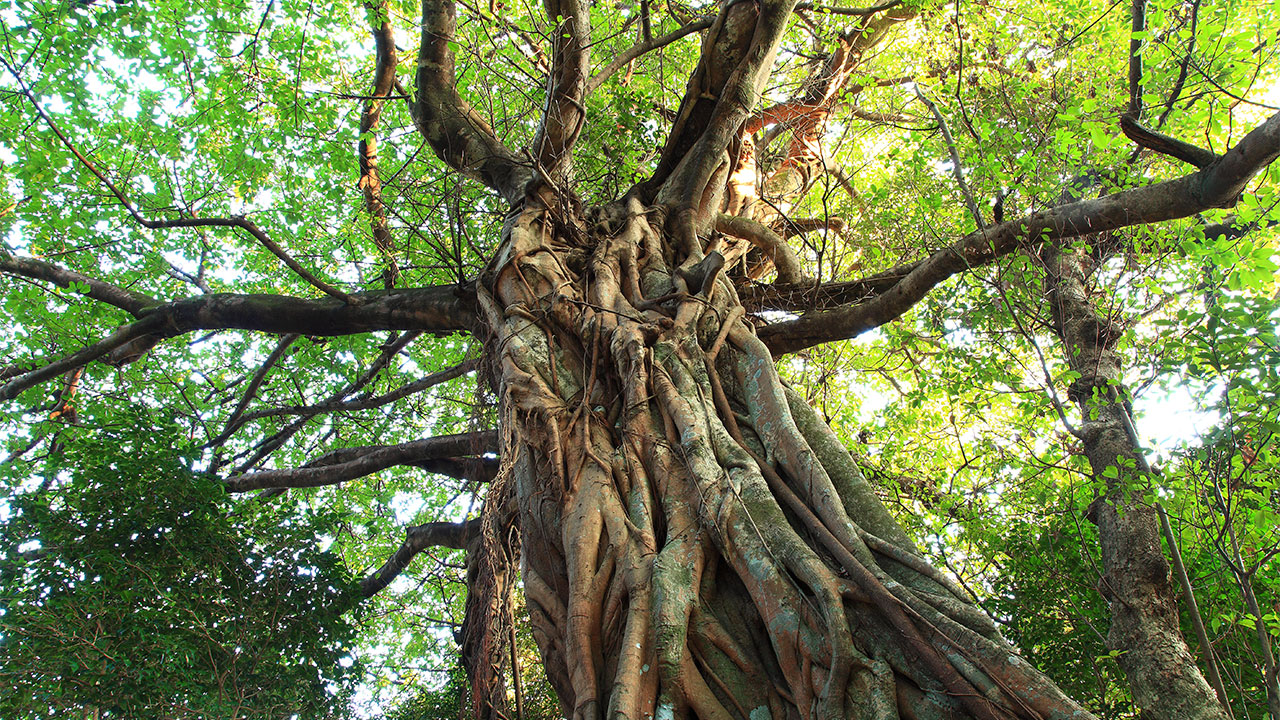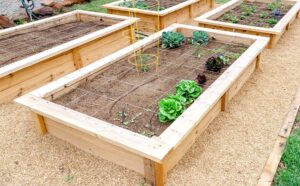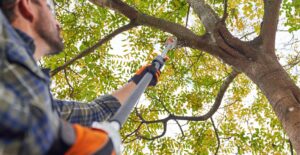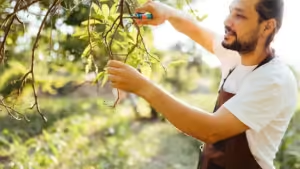1. Create a Flower or Vegetable Garden
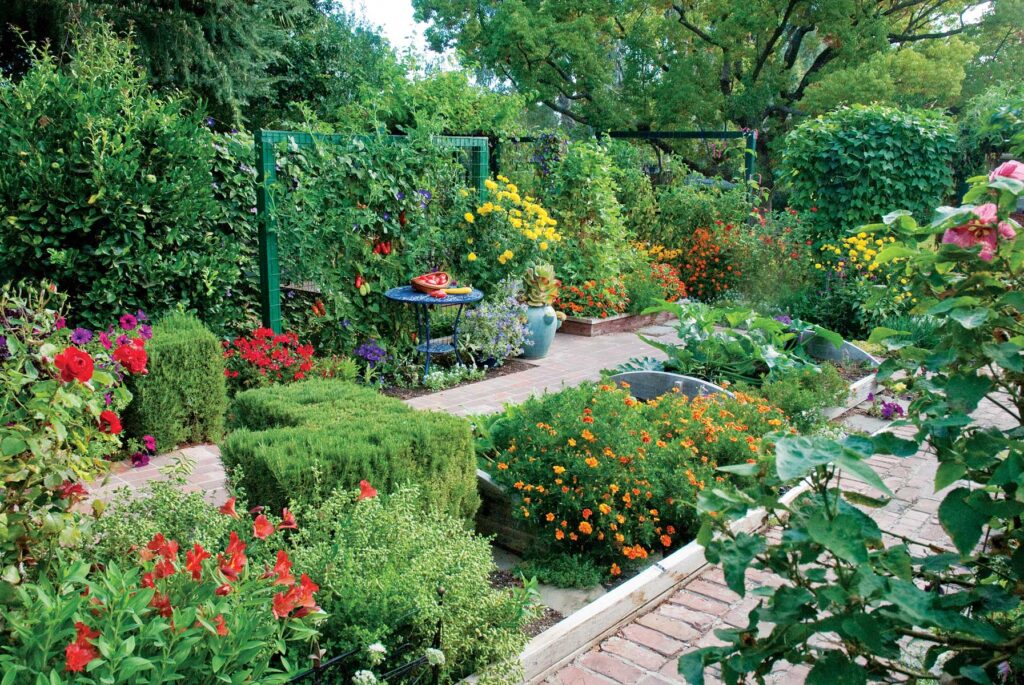
Introduction
Transforming the space left after tree removal into a flower or vegetable garden is a wonderful way to bring color, life, and functionality back into your yard. Whether you choose vibrant blooms or grow your own food, this project offers an engaging opportunity to reconnect with nature while beautifying your landscape.
Benefits
A flower garden adds a dynamic visual element with vibrant colors, enticing fragrances, and seasonal changes that can make your yard more appealing. Vegetable gardens, on the other hand, provide fresh produce, promoting healthier living and reducing grocery costs. Gardening can also be therapeutic, helping you de-stress and get some outdoor exercise.
Approximate Cost to Implement
The cost of starting a flower or vegetable garden depends on the plants you choose and the size of the space:
- Flower garden: Around $50 to $300 for flowers, soil, and basic gardening tools.
- Vegetable garden: Approximately $100 to $500, which includes seeds or seedlings, soil, compost, and raised beds (if needed).
How to Arrange the Garden
- Plan the layout: Consider sunlight exposure, spacing needs, and ease of access when planning your garden. Flowers and vegetables often have specific sunlight requirements, so grouping sun-loving plants together in areas with full sunlight will ensure maximum growth.
- Prepare the soil: Removing any debris or roots from the tree and enhancing the soil with compost or organic fertilizer will help plants thrive.
- Choose plants: For a flower garden, a mix of perennials and annuals will provide a continuous bloom throughout the seasons. Popular choices include roses, lavender, and marigolds. For a vegetable garden, start with easy crops like tomatoes, zucchini, and leafy greens.
Space Considerations
The size of your garden will depend on the space left by the tree. Small patches can accommodate compact plants like herbs or dwarf flower varieties, while larger areas are ideal for raised vegetable beds or sprawling flower beds.
How to Start
Begin by clearing the area of any leftover roots or stumps. Depending on the condition of the soil, you may need to till or amend it. Once your soil is ready, plant seeds or seedlings following spacing guidelines. Water regularly and mulch around plants to retain moisture.
2. Install a Patio or Deck
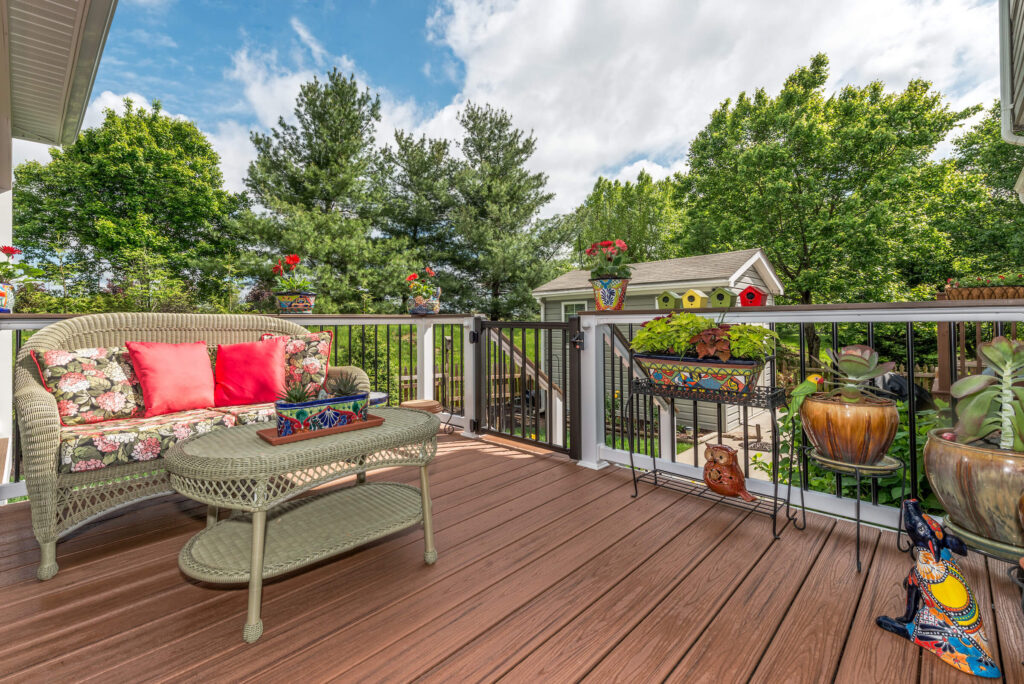
Introduction
A patio or deck is a fantastic way to reclaim the space left after tree removal and turn it into a functional outdoor living area. Whether you envision a dining spot, a lounge area, or a place for gatherings, a patio or deck can dramatically enhance your outdoor living experience.
Benefits
- Extended living space: A patio or deck provides a space for outdoor dining, entertaining, or simply relaxing.
- Increased property value: Both patios and decks are attractive features that can boost your home’s resale value.
- Low maintenance: Once installed, these spaces require minimal upkeep, especially when built with durable materials like composite decking or stone pavers.
Approximate Cost to Implement
The cost of building a patio or deck can vary widely depending on the materials used and the size of the area:
- Patio: Typically ranges from $800 to $3,000, depending on whether you choose concrete, brick, or stone.
- Deck: Costs range from $1,500 to $6,000, with higher-end materials like composite or hardwood pushing the cost to the higher end of the spectrum.
How to Arrange the Space
- Choose the design: For patios, consider pavers, brick, or concrete slabs. For decks, choose from wood, pressure-treated lumber, or composite materials.
- Add furniture: Once the hardscaping is in place, arrange outdoor furniture like a dining table, chairs, or lounge sofas.
- Incorporate decor: Add potted plants, decorative lighting, or even a fire pit to enhance the ambiance.
Space Considerations
Patios work well in both large and small areas. In larger spaces, you can add outdoor kitchens or seating zones. For smaller spaces, compact seating like bistro tables or built-in benches makes efficient use of the area.
How to Start
Start by clearing the area and removing any leftover debris from the tree removal process. Depending on your chosen material, level the ground for a patio or install footings for a deck. Work with a contractor if the project requires advanced carpentry or masonry skills.
3. Plant a New Lawn or Ground Cover
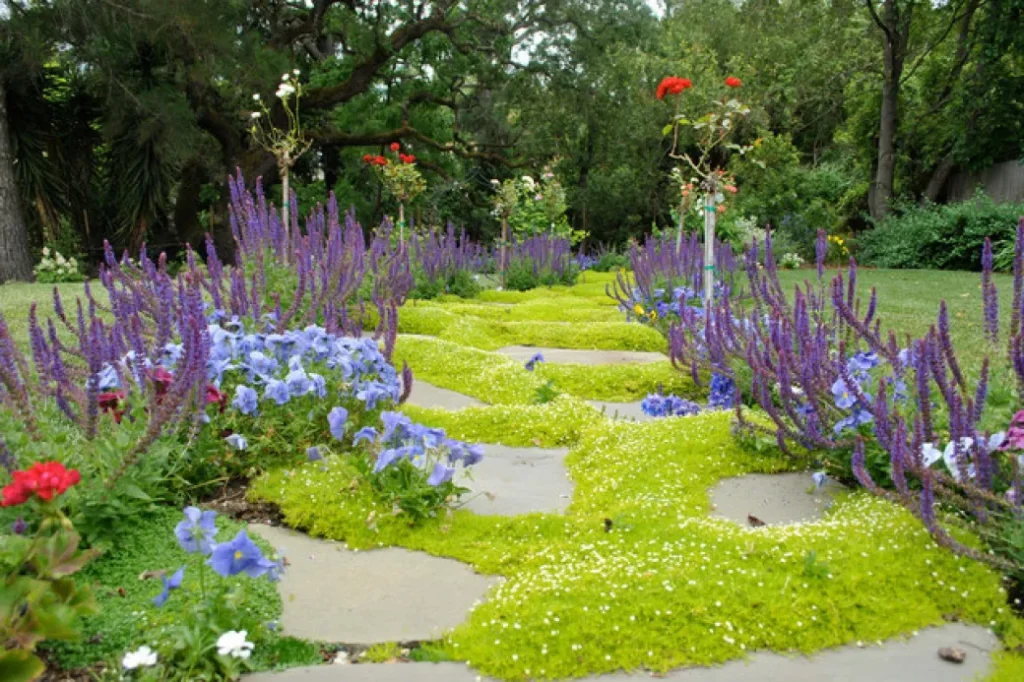
Introduction
After removing a tree, one simple yet highly effective way to restore balance to your yard is by planting a new lawn or a ground cover. These solutions add greenery back into your space, creating a fresh and unified look.
Benefits
- Instant greenery: Laying sod or planting ground cover provides an immediate visual transformation.
- Prevents erosion: Grass or ground cover plants help hold the soil together, preventing erosion in areas where roots were once stabilizing the ground.
- Low maintenance: Ground cover plants, once established, typically require less care than a traditional lawn.
Approximate Cost to Implement
- Lawn: Seeding a lawn is the more economical option, costing around $100 to $200 for seeds and soil preparation for a medium-sized area. Laying sod can cost between $500 and $2,000 depending on the size of the area.
- Ground cover: Plants like creeping thyme, clover, or vinca can cost anywhere from $50 to $300, depending on the species and the size of the area.
How to Arrange the Space
- Plan the layout: For lawns, ensure the area receives enough sunlight and plan for irrigation. Ground cover, on the other hand, thrives in varying conditions, so select your plants based on the sun/shade levels.
- Soil preparation: Clear out any tree roots or debris and amend the soil with compost or topsoil if necessary.
- Choose your plants: Select grass types like fescue or Bermuda for a lawn, or opt for ground cover plants like creeping thyme or clover.
Space Considerations
Both lawns and ground covers are flexible and can suit spaces of all sizes. A traditional lawn may be better suited for larger yards, while ground cover is ideal for smaller areas or shady spots where grass struggles to grow.
How to Start
Begin by clearing the area of any roots or rocks. For lawns, till the soil and level it before spreading seeds or laying sod. For ground cover, loosen the soil, plant the cover, and water it regularly until it establishes itself.
4. Install a Water Feature
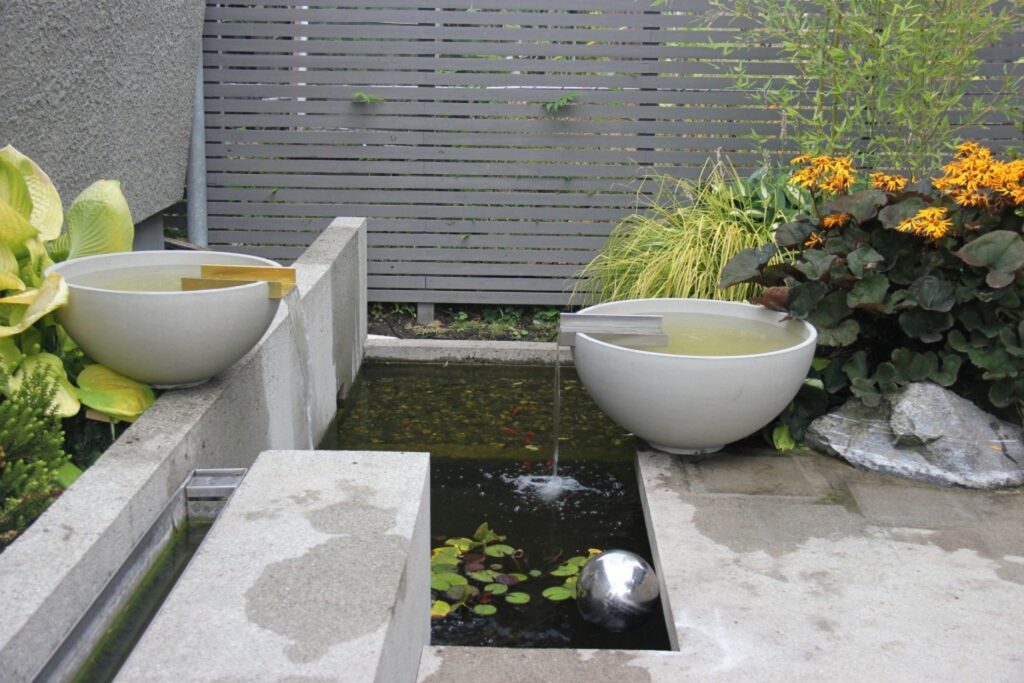
Introduction
Installing a water feature is a luxurious and calming way to transform the area left by tree removal. Whether you opt for a simple fountain, a bubbling pond, or a cascading waterfall, the addition of water adds tranquility and beauty to your outdoor space.
Benefits
- Aesthetic appeal: Water features can serve as focal points in the garden, offering visual and auditory beauty.
- Increases home value: A well-designed water feature can add value to your property by making your landscape more appealing.
- Wildlife habitat: Water features attract birds, insects, and even small mammals, creating a more dynamic and lively garden ecosystem.
Approximate Cost to Implement
- Fountain: Simple fountains can cost around $200 to $1,500 depending on the size and materials.
- Pond: A small backyard pond can range from $500 to $2,500.
- Waterfall: Costs can start at around $1,000 and can go up significantly depending on the complexity and size.
How to Arrange the Space
- Choose the feature: Decide between a pond, fountain, or waterfall based on your available space and budget. Fountains are ideal for small spaces, while ponds and waterfalls require more room.
- Add plants and rocks: Surround the water feature with aquatic plants, river rocks, or decorative stones for a natural look.
- Install lighting: Consider underwater or spot lighting to enhance the water feature’s appearance at night.
Space Considerations
Small fountains work well in compact yards, while larger ponds or waterfalls need ample space. Make sure to consider proximity to power sources for pumps and lighting.
How to Start
Begin by selecting the location. Ensure there’s a water source and drainage plan in place. You can either hire a professional landscaper for larger installations like ponds and waterfalls or purchase a ready-made fountain for simpler setups.
5. Create a Sitting Area or Meditation Space
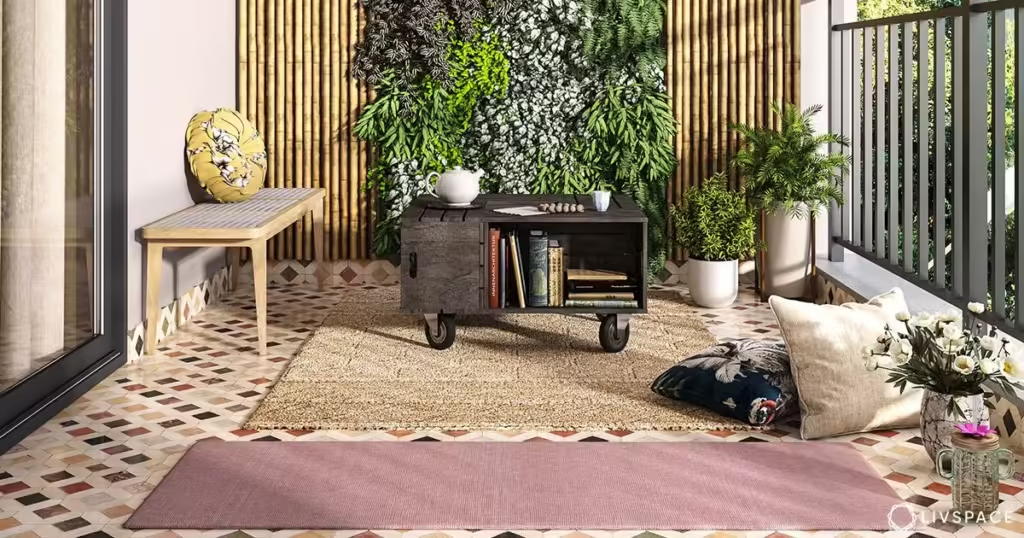
Introduction
Transform the cleared space into a sitting area or meditation space for a serene retreat. This idea is perfect for those looking to create a quiet spot to relax, reflect, or enjoy the outdoors.
Benefits
- Relaxation: A dedicated seating or meditation area can provide a peaceful escape right in your backyard.
- Versatility: A sitting area can be used for relaxation, reading, yoga, or even small gatherings.
- Minimal maintenance: Once established, this area requires little upkeep aside from occasional cleaning and refreshing of plants.
Approximate Cost to Implement
- Basic seating area: Costs range from $100 to $500, depending on whether you opt for benches, hammocks, or simple chairs.
- Elaborate retreat: A more comprehensive meditation space with custom furniture, pergolas, or ornamental features can range from $1,000 to $5,000.
How to Arrange the Space
- Define the boundaries: Use stones, pavers, or mulch to define the seating area.
- Choose furniture: For a basic setup, a bench or a few outdoor chairs will suffice. For a more elaborate space, consider adding a pergola or hammock.
- Add greenery: Surround the area with shrubs, small trees, or potted plants to create a natural barrier and a feeling of seclusion.
Space Considerations
This idea works well in both large and small spaces. If you have limited room, opt for a small bench and keep the design minimal. Larger yards can accommodate features like pergolas, garden swings, or even outdoor fireplaces.
How to Start
Clear the area of any debris, define the seating space, and then install furniture. Add decorative elements such as wind chimes, garden sculptures, or planters to personalize the space and make it a calming retreat.
